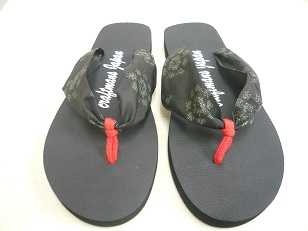craftmans Japan
商品紹介
藍染
藍染の歴史
History of indigo dyeing
It is said that indigo dye is the most used plant dye in the world. The history of indigo dyeing is long, and the mummy of around 2000 BC excavated at the Thebes site in Egypt was wrapped in indigo-dyed linen. After that, indigo dyeing spread to India and China, and it is said that it was introduced to Japan from China during the Asuka period. In the Muromachi period, it is said that the prototype of the current method was established, and since then, Japan's unique indigo dyeing technology has been handed down. The scientist Atkinson, who visited japan in 1868, was surprised that it was filled with blue clothes all over Japan, andhe named the color of the rose"JAPAN BLUE".西陣織とは
京都の先染織物をまとめた総称です。室町時代我が国を二分する戦いとなった応仁の乱が終わると、西軍の陣地が置かれていたあたりで、織物を再開します。織物自体の歴史はもっと古いのですが、このころから西の陣地跡ということで「西陣」と呼ぶようになりました。 1500年代西陣で織物生産を行っていた集団「大舎人座」の職人が多数足利家の官となったことで、西陣ブランドは広く定着。様々な発展を遂げる。現在も京都中心に多くの品種が高級絹織物として作られています。
What is Nishijin Ori?
This is a general term for the pre-dyed fabrics of Kyoto. When the Onin War, which became a battle to divide our country during the Muromachi period, ended, the textile was resumed around the area where the base of the Western Army had been placed. The history of the textile itself is much older, but from this time on, it came to be called "Nishijin" because it was the site of the west base. The Nishijin brand became a large number of Ashikaga family officials by the artisans of the group "Osha-jinza" who produced textiles in Nishijin in the 1500s. They achieve various developments Many varieties are still made as high-grade silk fabrics in the center of Kyoto.
江戸小紋
細かい模様を白抜きし単色で染める日本の型染の一つ。江戸時代の武士の裃 (かみしも) に用いられて発達し,羽織,着尺などにも使用されるようになったが,明治以降,婦人着尺に細かい模様で多色の型友禅が現れ,これも小紋と呼ぶようになったため,本来の小紋と区別する法として江戸小紋の名が使われた。
It is one of the japanese pattern dyed to dye a fine pattern with a single color by removing white. It was used for the samurai's kimono (kamishi also) in the Edo period and developed, and after the Meiji era, a multi-colored pattern yuzen appeared in a fine pattern on the women's clothing scale, and this was also called a small crest, so the name of edo komon was used as a method to distinguish it from the original crest.
大島紬
大島紬(おおしまつむぎ)とは、鹿児島県南方にある奄美群島(主に奄美大島)の伝統工芸品としてつくられる織物。手で紡いだ絹糸を泥染めしたものを手織りした平織の絹布、若しくはその絹布で縫製した和服を指す。通称・略称は「大島」。鉄分が染み込むため着崩れや虫食いしが起きにくく、孫子の代まで長く使える。独特の黒褐色を基調とした繊細な折柄の美しさも評価され、日本の絹織物のうちでも高級品として知られる。安い物で一反30万円程度、最高級品は数百万円する。現代では「色大島」「白大島」など色調・柄の多様化が進んでいる。
Oshima Tsumugi is a fabric made as a traditional craft of amami island (mainly Amami Oshima) in the southern part of Kagoshima Prefecture. It refers to a plain woven silk cloth woven hand-woven with mud-dyed silk spun by hand, or a Japanese dress sewn with silk cloth. The common name and abbreviation is Oshima. Because iron is soaked, it is hard to wear out or eat insects, and it can be used for a long time until the generation of sun children. The beauty of the delicate eclectic pattern based on a unique black-brown color is also evaluated, and it is known as a luxury item among the silk textiles of Japan. It is cheap, and the highest quality is several million yen. In modern times, the variety of color and patterns such as "Shikioshima" and "Shiraoshima" is progressing.



